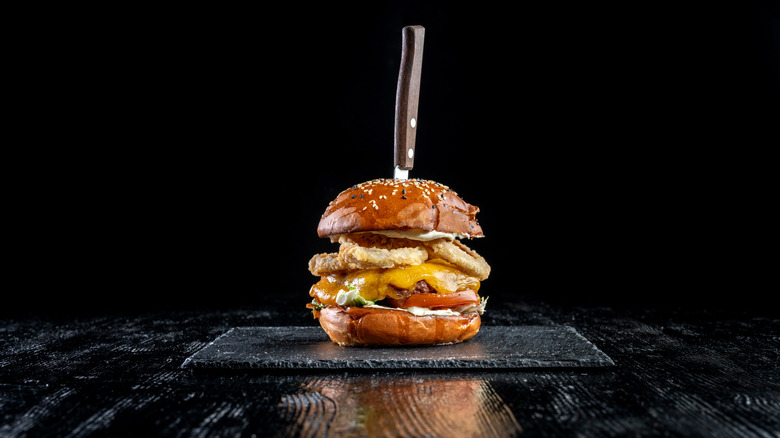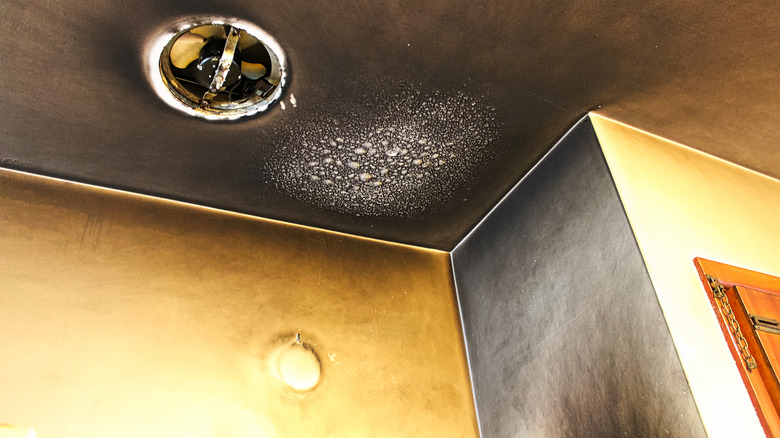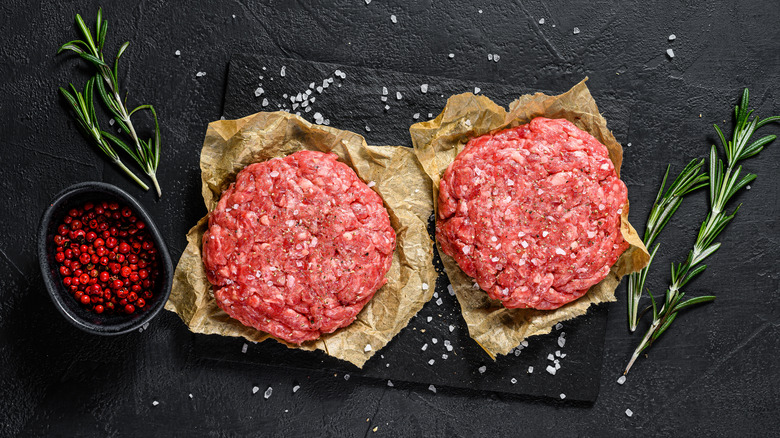Why You Should Consider A Lower Fat Meat Blend When Making Burgers Inside
There are countless versions of the hamburger — some ingenious, some gimmicky, and some preposterously ponderous. People are stuffing them, stacking them ever higher, and using all kinds of fancy toppings — including lobster, foie gras, and truffle — that are far beyond the traditional lettuce, tomato, onion, and pickles. A freshly-baked or brioche bun can also increase the price tag of a burger, as can the cheese selection (a nice blue is incredible with charbroiled beef). But the true test of a memorable burger is the patty.
A typical burger patty is made of ground meat, fat, and your seasonings of choice. The meat used varies wildly — you can find patties made with blends that include wagyu, brisket, and even ribeye and filet mignon. But because burgers are cooked very hot, you need to do all you can to make sure they don't lose their moisture. Many a grill master knows that fat helps in this department.
While adding bacon to your burger blend will make the patty extra juicy and smoky, this practice might not be the best for cooking between four walls. Here's why.
Kitchen grease can lead to safety issues
If you've ever (and who hasn't?) set off the smoke alarm while cooking, you'll know that fat can present a fire hazard. According to ADT, potentially flammable kitchen grease is created when you cook fats over high heat. The fat boils and smokes before combusting. And while animal fats generally have generous smoke points, ADT indicates that they'll broach the danger zone at 350-370 degrees Fahrenheit. Fires can spread anywhere there's more grease to burn, including your stovetop, counter, exhaust vents, cookware — even your walls, ADT cautions. That's a terrifying prospect, but fortunately, it's easy to prevent.
Aside from being diligent about your cooking temperatures, you can avoid grease fires by keeping your kitchen clean. But you can also reduce grease overall by cooking with lower-fat meats and meat blends. When it comes to homemade burgers, you'll usually be reaching for ground beef that has a specific fat ratio listed on the package — the higher number is the lean meat and the lower is the fat.
For example, a 70/30 blend is 70% percent meat and 30% fat. That's fairly fatty. For stovetop cooking, look for ground beef labeled "80% lean," "85% lean," or "90% extra lean," suggests North Dakota State University. And consider using grass-fed beef, bison or venison, which are naturally very lean and nutritious.
Ensure a better burger by grinding the meat yourself
The second reason you should cook leaner burger meat indoors has to do with the eating qualities of your finished dish. Inside, your pan catches the juices that disappear into a flaming grill. So you won't have to worry so much about your meat drying out, as long as you cook attentively (per Food & Wine). However, because fat adds flavor, you'll want to be sure to season your DIY lean burger patties thoroughly (per Laura's Lean Beef). You can throw together a Cajun spice blend or taco seasoning, adding smoked paprika, bacon salt, or liquid smoke to create the woodsy flavors you'd normally get from the grill. And adding mushrooms to your burgers gives them an earthy richness.
There's also the option of making homemade meat blends. You'll need a meat grinder and unrendered beef or pork fat (available from butchers and farms), but you can precisely control how much fat's in the mix and what cuts of meat you'd like to use. Chuck and sirloin are naturally lean choices. This is also a way to ensure your ground beef is fresh and high-quality, and you'll have a better idea of how the animals were treated and the products were handled.
You can also grind meat trimmings, which saves money and reduces waste. Opting for less fat for your inside cooking might just challenge you to make your best burgers yet.


